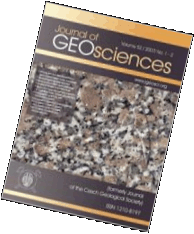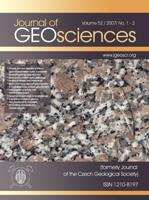 Export to Mendeley
Export to MendeleyOriginal paper
Late Ordovician magmatic pulse in the Tugrug Group, the Gobi Altai Zone, SW Mongolia
Journal of Geosciences, volume 69 (2024), issue 1, 31 - 19
DOI: http://doi.org/10.3190/jgeosci.385
The Mongolian Altai Domain of the Central Asian Orogenic Belt is formed by a giant Lower Palaeozoic accretionary wedge that was later thrust over the northerly Central Mongolian Microcontinent. This accretionary complex mainly consists of late Cambrian-Ordovician volcano-sedimentary rocks represented by various formations within the Tugrug Group which were deformed, metamorphosed and intruded by numerous plutons during the Devonian-Carboniferous orogenic events. In this work, we report new U-Pb zircon ages of two felsic igneous rocks indicating an existence of the so far neglected Late Ordovician magmatic event affecting the Mongolian Altai accretionary wedge. The felsic volcanic sheet inside the upper part of the Tugrug Group in the western Gobi Altai Zone (eastern part of the Mongolian Altai Domain) yields an age of 457 ± 2 Ma and nearby granite pluton intruding the entire volcano-sedimentary sequence gives an age of 445 ± 1 Ma. Both rocks are high-K calc-alkaline, peraluminous, with similar geochemical patterns characterised by enrichment in mobile lithophile elements over Nb, Ti, P and Sr and nearly identical REE trends. All together, these features point to an analogous volcanic-arc-related magma source. This magmatism reflecting terminal stages of the accretionary wedge formation in the Mongolian Altai Domain may be related to the recently proposed Late Ordovician orogenic event.
Webdesign inspired by aTeo. Hosted at the server of the Institute of Petrology and Structural Geology, Charles University, Prague.
ISSN: 1803-1943 (online), 1802-6222 (print)
email: jgeosci(at)jgeosci.org


IF (WoS, 2022): 1.4
5 YEAR IF (WoS, 2022): 1.8
Policy: Open Access
ISSN: 1802-6222
E-ISSN: 1803-1943